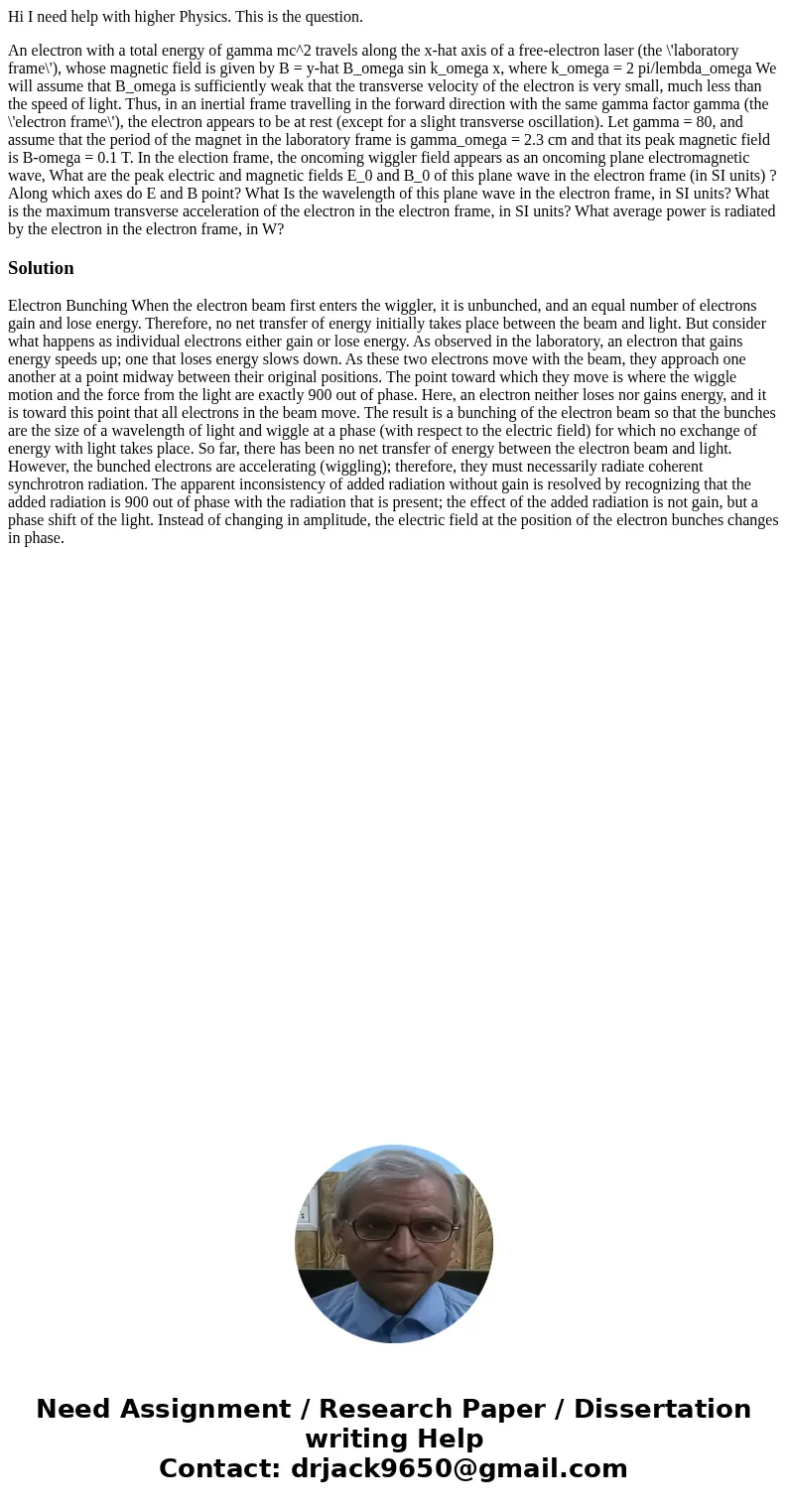Hi I need help with higher Physics This is the question An e
Hi I need help with higher Physics. This is the question.
An electron with a total energy of gamma mc^2 travels along the x-hat axis of a free-electron laser (the \'laboratory frame\'), whose magnetic field is given by B = y-hat B_omega sin k_omega x, where k_omega = 2 pi/lembda_omega We will assume that B_omega is sufficiently weak that the transverse velocity of the electron is very small, much less than the speed of light. Thus, in an inertial frame travelling in the forward direction with the same gamma factor gamma (the \'electron frame\'), the electron appears to be at rest (except for a slight transverse oscillation). Let gamma = 80, and assume that the period of the magnet in the laboratory frame is gamma_omega = 2.3 cm and that its peak magnetic field is B-omega = 0.1 T. In the election frame, the oncoming wiggler field appears as an oncoming plane electromagnetic wave, What are the peak electric and magnetic fields E_0 and B_0 of this plane wave in the electron frame (in SI units) ? Along which axes do E and B point? What Is the wavelength of this plane wave in the electron frame, in SI units? What is the maximum transverse acceleration of the electron in the electron frame, in SI units? What average power is radiated by the electron in the electron frame, in W?Solution
Electron Bunching When the electron beam first enters the wiggler, it is unbunched, and an equal number of electrons gain and lose energy. Therefore, no net transfer of energy initially takes place between the beam and light. But consider what happens as individual electrons either gain or lose energy. As observed in the laboratory, an electron that gains energy speeds up; one that loses energy slows down. As these two electrons move with the beam, they approach one another at a point midway between their original positions. The point toward which they move is where the wiggle motion and the force from the light are exactly 900 out of phase. Here, an electron neither loses nor gains energy, and it is toward this point that all electrons in the beam move. The result is a bunching of the electron beam so that the bunches are the size of a wavelength of light and wiggle at a phase (with respect to the electric field) for which no exchange of energy with light takes place. So far, there has been no net transfer of energy between the electron beam and light. However, the bunched electrons are accelerating (wiggling); therefore, they must necessarily radiate coherent synchrotron radiation. The apparent inconsistency of added radiation without gain is resolved by recognizing that the added radiation is 900 out of phase with the radiation that is present; the effect of the added radiation is not gain, but a phase shift of the light. Instead of changing in amplitude, the electric field at the position of the electron bunches changes in phase.

 Homework Sourse
Homework Sourse